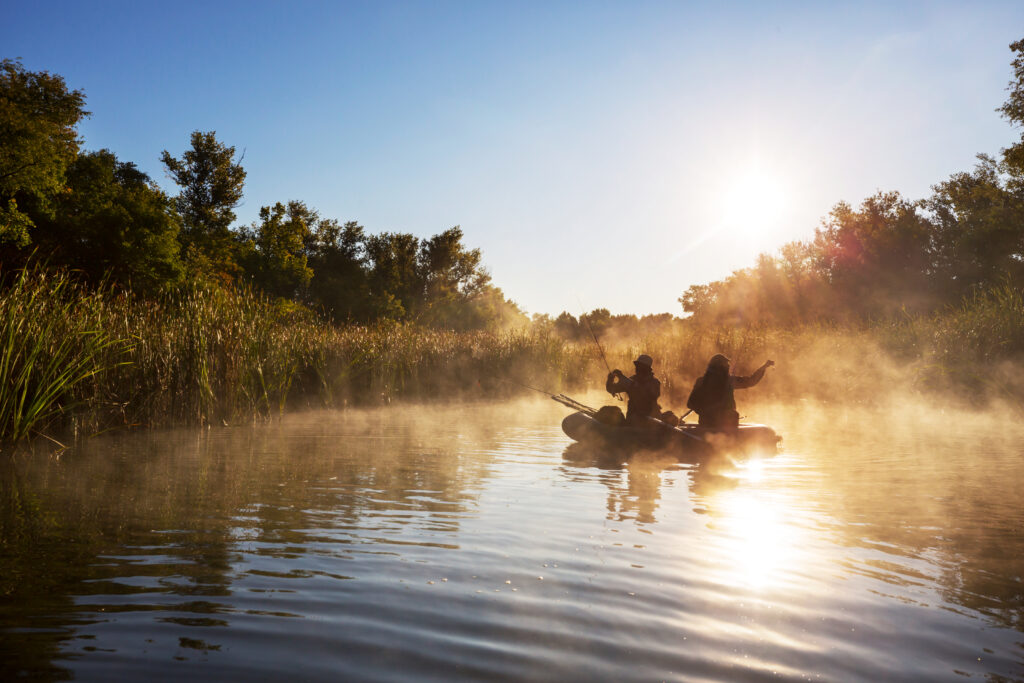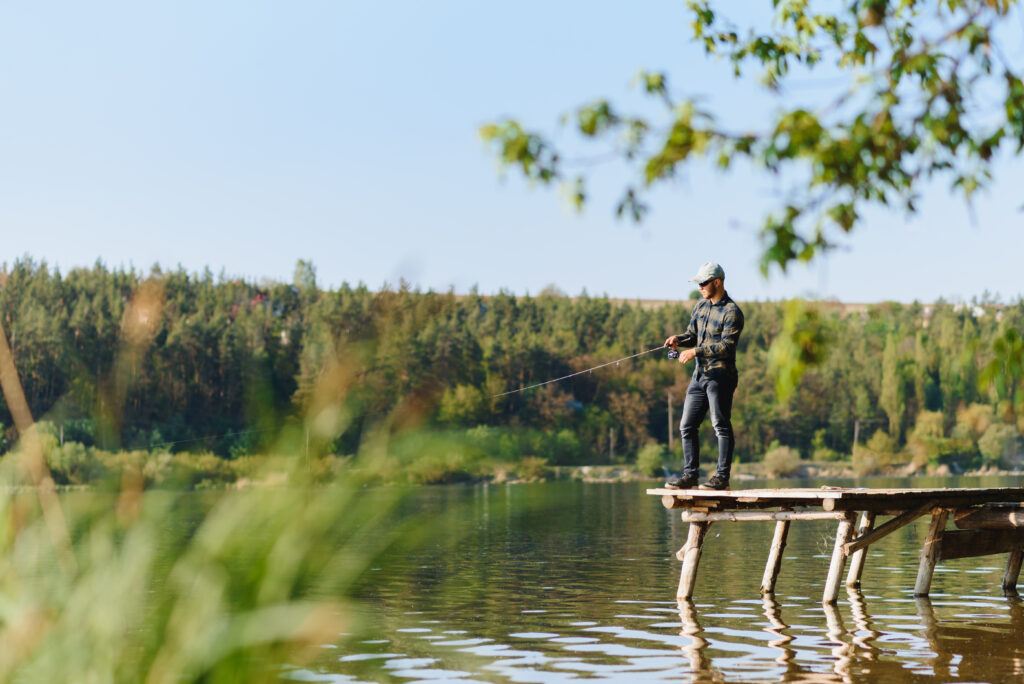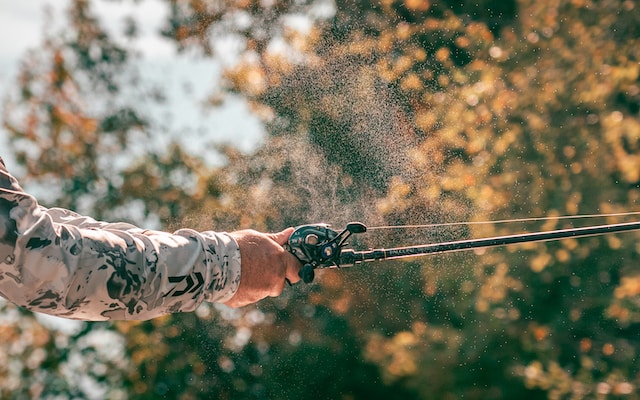Imagine this: You’ve spent several hours fishing the same spot over and over again without any luck. Other anglers have had incredible luck at this same spot in the past, but you aren’t seeing the same results. This location is obviously yielding fish, so why are you not catching them here?
Several factors can impact why you aren’t catching fish, such as the time of day, the bait you’re using, or even the weather conditions. Fortunately, it is very easy to do your research and find a fishing report that highlights all of the factors to take into consideration to catch more fish at your favorite honey holes.
Planning ahead and knowing where to look can increase your chances of catching a fish on future fishing trips. Fishing reports are an extremely useful resource for anglers because they help you determine which fish species to target, their desired habitat, and the best time and place to fish for them. In this article, I will guide you on how to find and use fishing reports so that you won’t have to go home after your next fishing trip without a story to tell.
Understanding Fishing Reports
Fishing reports are detailed records of recent and updated information about fishing conditions in specific areas. They’re often compiled by seasoned anglers, outdoor guides, and even local authorities. These reports are useful because they provide real-time information on factors that significantly impact your fishing experience, such as weather, water conditions, and fish activity.
For new anglers, fishing reports can seem like a jumble of cryptic documents filled with fishing jargon. But to veteran fishermen, these are treasure troves of information leading to the best spots and fishing techniques.
Fishing reports have evolved over time, moving from hand-written notes in the corner of a bait shop to in-depth online databases that update every few hours.

Navigating Fishing Reports
Where Can I Find Fishing Reports?
Bait and Tackle Shops.
Finding fishing reports may seem overwhelming at first, but there are several reliable sources you can turn to. Local bait and tackle shops are often gold mines for up-to-date fishing reports. These establishments frequently gather reports from local fishermen and sometimes even compile them into regular newsletters or bulletin boards.
Online Forums.
Another valuable resource is online forums and websites dedicated to fishing in specific regions or types of fishing. These platforms allow anglers to share their experiences and insights, offering a real-time look at what’s biting and where.
Conservation Agency Websites.
Government and conservation agencies also produce fishing reports, especially for larger bodies of water like lakes, rivers, and coastal areas. These reports can often be found on their websites and are updated regularly with information about water conditions, fish stocking schedules, and even environmental concerns that might affect fishing.
Social Media Groups.
Lastly, social media groups and pages focused on fishing in certain areas can be surprisingly informative. Members of these communities are usually eager to share their successes and tips, making social media a valuable tool for anyone looking to get the most current fishing information.
Deciphering the Data Found in Fishing Reports
One of the most critical factors in fishing reports is weather data. Temperature, wind speed, precipitation, and barometric pressure are the primary components of weather that can either generate the ideal conditions for a fishing frenzy or result in fish not being active at all.

The Impact of Weather on Fishing Conditions.
Temperature: Fish are cold-blooded creatures, meaning that their body temperatures are directly influenced by their surroundings. Therefore, temperature plays a vital role in determining fish behavior and feeding patterns. In warmer water temperatures, some fish species may become more active and engage in more aggressive feeding behaviors. On the other hand, a sudden drop in water temperature can send fish into deeper waters, searching for a more stable environment.
Wind Speed: Strong winds can mix water layers, resulting in cooler water rising to the surface and pushing surface water to create currents. Although strong currents due to wind can stir fish out of hiding and lead to feeding frenzies, they can also make certain fishing spots less accessible and casting more difficult. Check your next fishing report for wind-blown points where bait fish accumulate and predator fish are likely on the hunt.
Precipitation: Precipitation has a direct impact on water clarity and level, which in turn affects fish behavior. Heavy rains can lead to murkier water, making it harder for fish to spot bait or lures. This can also lead to increased activity in some species, as they take advantage of disoriented prey, such as insects that have washed into the water body.
Barometric Pressure: High pressure is generally associated with clear skies and calm weather, which encourages fish activity. Low pressure, often caused by incoming storms, slows down fish feeding cycles as the fish move to deeper water. Some of the best fishing times occur when the pressure has been consistent for several days.
Understanding these simple weather components can greatly improve your chances of success while out on the water. Align your fishing strategies with current weather conditions for the greatest chance of catching more fish.
How Do I Learn The Terms Used in Fishing Reports?
To a new angler, there may be some terms used in fishing reports that do not make sense right away. Sure, you can always look up what these terms mean, but I want you to stay ahead of the game by providing you with a list of words that are helpful to know before browsing through your first fishing report.
Artificials – Man-made lures used to catch fish that are not live bait.
Dead Stick – A method of fishing where you lower the bait to a certain depth and let the bait sit until a fish strikes.
Flipping – A casting technique used for short distances. You are basically “flinging” your lure in a pendulum motion to reach its target.
Foul Hook – Snagging a fish anywhere on its body except for its mouth.
Hard Bait – A lure made of hard materials like metal or plastic.
Hot Spots – Areas where fish are actively feeding or congregating due to favorable conditions.
Lake Levels – Lake water measurements.
Leader – A length of line used to connect the lure or hook to the main line. In most cases, the leader is heavier than the main line to protect against abrasion from a fish’s teeth or underwater structures. Other times, the leader is lighter to reduce the visibility of the fishing line in the water column.
Live Baits – Using actual living creatures for bait, like minnows, worms, and shrimp.
Lunker – A very big, typically record-setting fish.
Main Lake Points – Shallow areas that stick out into deeper areas within the main water body. These are often the most common form of structure on most lakes.
Outriggers – Poles used on large sport fishing boats to hold fishing lines off to the sides of the boat.
Spoons – Large, metal lures that are shaped like spoons.
Thermocline – A horizontal temperature barrier that separates cooler, deeper water from warmer water found at the surface.
For an extensive list of commonly used fishing terms, check out this A-Z list.
What Are the Different Types of Fishing Reports?
Depending on your needs and preferences, you can choose from a variety of fishing report formats that provide valuable and helpful information. Let’s explore the benefits of various types of fishing reports.
Local Reports: Focus on a single body of water or region and are updated frequently, offering specific, real-time data. Local fishing reports are great for those last-minute trips or quick weekend outings.
Regional Reports: Provide broader information about multiple locations and are updated less frequently. They’re more suitable for planning extended trips or when you’re exploring new areas.
Online Forums and Social Media: Community forums can be a mixed bag, but they are valuable sources of community insights and anecdotal evidence. Some of the advice that you receive online may not be the most accurate, but social media is a great way to see what other anglers are catching firsthand.
Professional Reports: If you’re looking for top-quality, specialized information on fishing, you can rely on expert reports from professionals such as fishing guides and charter services. They offer valuable insights and guidance that can enhance your fishing experience and help you make the most of your time on the water.

Choosing the Best Fishing Reports
When selecting a report, choose those that have earned credibility within the angling community over time.
When seeking reliable information, it’s always useful to consider the credibility of the source. A reputable source is one that has a proven track record of providing accurate and reliable information that aligns with your own experiences.
Additionally, it’s essential to develop the skill of identifying any biases present in the reports. By recognizing the impact of factors such as sponsorship deals, personal opinions, and the intent to deceive, you can make informed decisions about the accuracy of the data.
The goal is to find reports that provide information tailored to your fishing style, the species you’re targeting, and your desired location.
It may be helpful to consider cross-referencing multiple fishing reports to gain a more comprehensive understanding of the conditions and potential catches in the area. This approach should optimize your fishing experience and increase your chances of a successful catch.
Tips for Using Fishing Reports Effectively
One key factor in achieving a successful fishing trip is setting realistic expectations. This means managing expectations based on the information provided in the fishing reports.
It’s also important to be adaptable and adjust your fishing strategy based on real-time conditions to make the most of your time on the water.
Building strong relationships within the angling community is another valuable approach to accessing insider information and improving your chances of success. Contributing to the community by sharing your own fishing experiences and insights is a wonderful way to give back and support others in the fishing community.
Find A Fishing Report to Plan For Your Next Fishing Trip

By understanding the different types of fishing reports and how to use them effectively, you now have the tools to conduct your own research and improve your fishing success. I encourage you to put this knowledge into practice and experiment with different approaches to enhance your fishing experience.
Fishing reports are not just a record of the past; they can also predict your future success as an angler. This guide is just the first step in learning how to read and interpret fishing reports. With practice, experience, and a bit of luck, you, too, can be one of those successful anglers who can confidently say, “I caught my limit today because I read the fishing report.”
Whether you’re planning to visit a nearby lake after a long day at work or scheduling a week-long trip to a state park, make sure to check the fishing report for that area. This is crucial if you want to catch more fish and come back with an amazing catch story to tell. Don’t miss out on this opportunity to improve your fishing experience!

